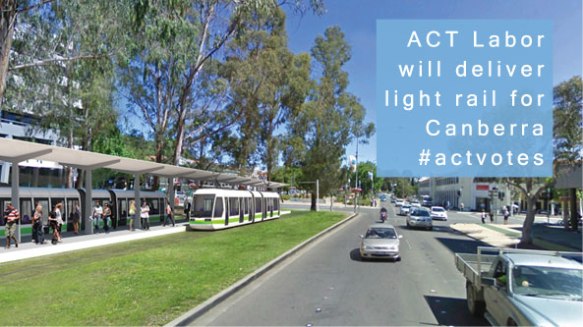ACT Labor’s plan to help Canberrans save energy and money
We all share a sense of pride in our city. ACT Labor continues to invest in Canberra to make it an even better place to live, work, study and play.
We are working hard to improve our high standard of living and ensure our city continues to thrive with more jobs and more services than ever before.
ACT Labor took the lead in 2007 with its initial response to the challenge of climate change Weathering the Change Action Plan 1. ACT Labor has been implementing the actions identified in the plan and will continue to deliver sensible and cost effective programs as we move on to Weathering the Change Action Plan 2.
The actions cover mitigation and adaptation and include a strong focus on energy efficiency and conservation.
But there is more to do.
If re-elected in 2012, ACT Labor will help Canberra households reduce energy, reduce emissions and save money on bills which lower the cost of living.
ACT Labor will provide online tools to help Canberrans better manage their energy use.
We will also legislate to make sure all new homes in Canberra will be fitted with a ‘single switch’ which will turn off power and reduce energy use from non-essential appliances.
ACT Labor’s energy savings policy will reduce energy costs to Canberrans while reducing emissions. The benefits are a win-win for everyone in our community – energy savings go directly to households and businesses and less demand lowers generation and other costs in the energy supply system, adding to savings and decreasing the cost of living.
The improved website and educational tools will aid and guide Canberrans on ways to take personal action to improve their lifestyles while contributing to the effort to combat global warming.
The move to a single switch in new buildings will make it easier for new homeowners and businesses to manage their own energy use in the ways recommended on the website.
Policy costings
ACT Labor will invest $183,000 in recurrent funding over four years to provide practical online tools which will help Canberrans to save energy and money.
2013-14 2014-15 2015-16 2016-17 TOTAL
Recurrent $0.031 $0.110 $0.042m – $0.183
Total $0.031 $0.110 $0.042m – $0.183
Policy Initiatives
Better advice and tools to save energy and lower bills
ACT Labor will improve the ACT Government website to offer better advice and tools for Canberrans to learn what they can do to save energy while making their homes more liveable and saving money by lowering energy bills.
We will add a web-based household/personal sustainability footprint calculator, action planning and tracking tool which will be accessed via the ACTSmart website. These tools will provide the general public with information about a range of actions to help them to live more sustainably, reduce their carbon footprint and reduce greenhouse gas emissions. The website will also encourage Canberrans to pledge their commitment to a sustainable lifestyle.
Legislative changes
If re-elected, ACT Labor will legislate to mandate for new premises to have a single switch design on certain power circuits in buildings, saving energy and money for residents and businesses.
When activated, the single switch will turn off all appliances plugged into the linked socket outlets in the home, but would exclude appliances plugged into specific unlinked sockets for equipment that needs to run continuously, such as refrigerators.
These initiatives will work in partnership to ensure that the entire community can benefit from reduced greenhouse gas emissions. Householders who use the website to implement the advice on the site and or use the single switch once it is installed will benefit from lower energy use and lower power bills. These initiatives will also assist low income earners.
Both these initiatives will be linked to ACT Labor’s recently passed Energy Efficiency (Cost of Living Improvement) Act 2012, which includes a Single Switch option as an eligible activity to retrofit into existing homes and will see some energy efficiency education from utilities to match their offers.
What we have already delivered
• The ACT Labor Government has legislated an Energy Efficiency obligation scheme as part of its Weathering the Change Climate Change Strategy with the passage of the Energy Efficiency (Cost of Living Improvement) Act 2012. The Act will provide energy efficiency and savings on bills to more than 70,000 ACT households with a discrete mandated target of 25% for low income households;
• ACT Labor’s legislated obligation placed on electricity retailers to offer GreenPower first to consumers;
• The ACT Small Business Energy and Water Program which helps to reduce energy and water use in businesses while lowering operating costs;
• The delivery of energy efficiency programs under the ACTSmart brand;
• The $4.4m Outreach program delivered through community sector partners such as Communities@ Work, the YWCA and St Vincent de Paul Society to assist low income households lower energy costs;
• Free Home Energy Advice Team (HEAT) services to help Canberrans find out how to reduce energy use and save money at the same time as well as offering rebates to take action at home; and
• Home Energy Action Kits to allow homeowners to undertake their own audit assessment of their energy use so they can take action to reduce it.
12 October 2012








